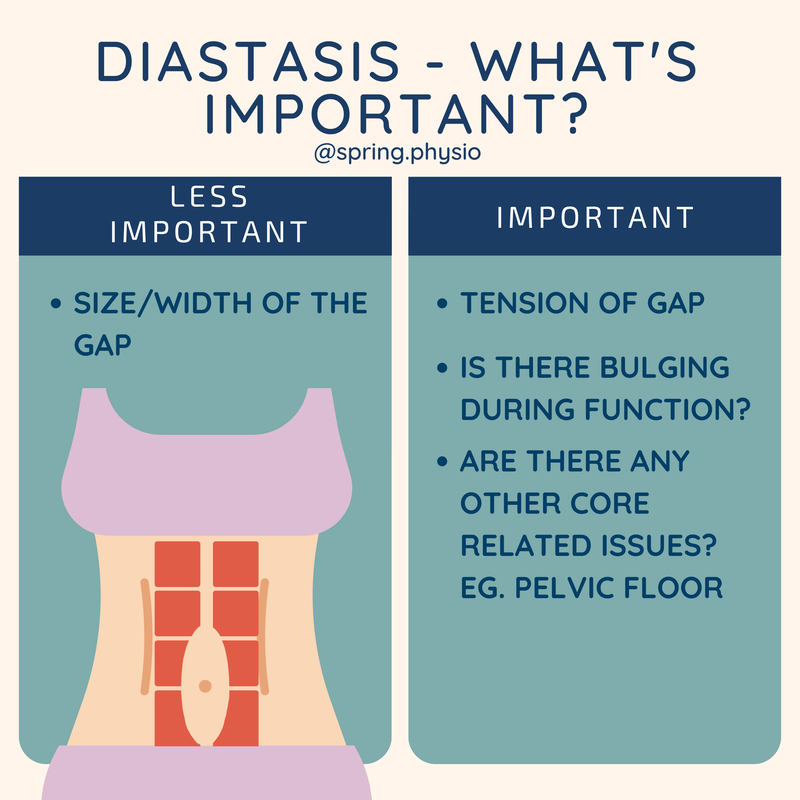|
There seems to be concern amongst those who have a diastasis that gap size determines whether they have recovered . Whilst gap width is something we assess in clinic, there are more important aspects of diastasis that need to be assessed:
1) How much tension you can generate across the gap during load? For example: during an abdominal curl up. If you put your finger on the gap whilst performing a curl and you feel it’s tense/firm, that’s a good sign 👍. It shows the abdominals are engaging ok. If it is very soft, some more rehab is needed. 2)Is there doming/bulging on functional activities? I have seen women with a very small gap who have significant doming during high level activities, and those who have a bigger gap that don’t dome at all. That’s why assessment is so important. You shouldn’t be frightened to exercise - a Physio can give you very specific guidance about what activities you can do (and I bet they say you can do more than you expect). The key is modification. 3) How is the rest of the core performing? It's important not to just look at one element of core function because every woman should be treated holistically. If someone has a pelvic floor issue as well as diastasis, this should be assessed too. It is possible to kill two birds with one stone when setting up a rehab programme; two core issues can be treated together.
0 Comments
Leave a Reply. |
AuthorClaire is a women's health and sports Physiotherapist. She is the owner of Spring Physio and is based in East Sussex. Archives
April 2024
Categories
All
|


 RSS Feed
RSS Feed